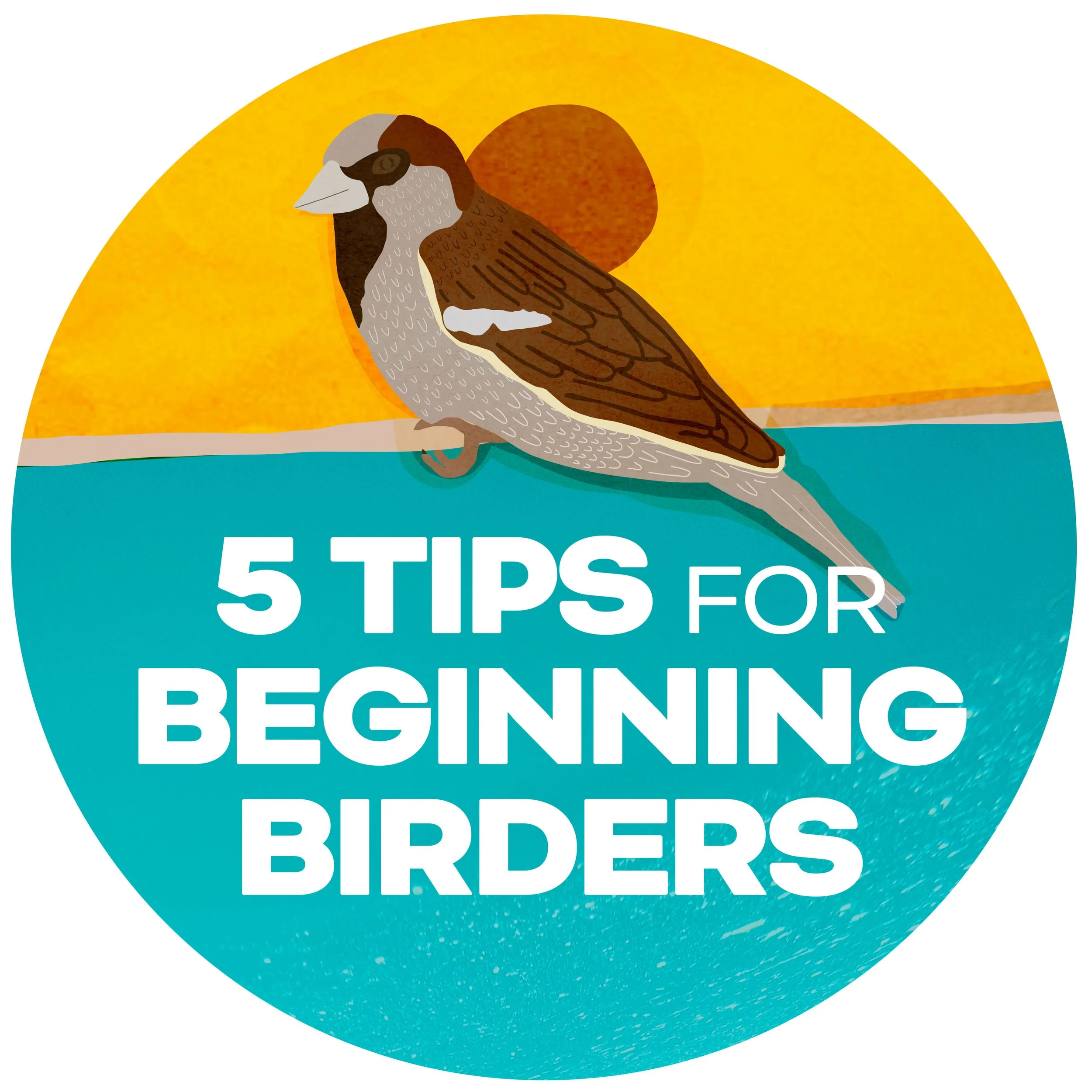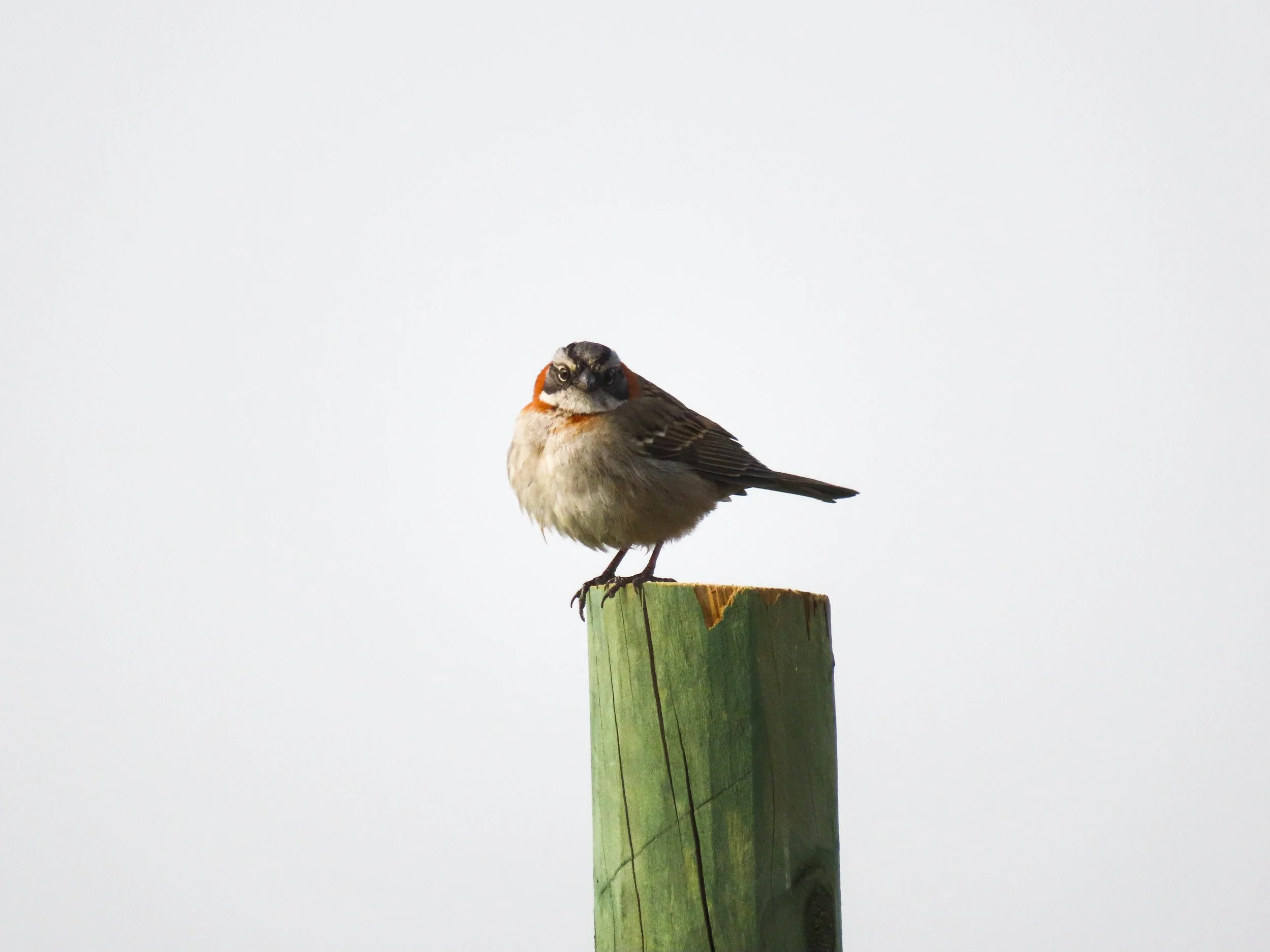5 Tips for Beginning Birders
I'm the newest board member of the Five Valleys Audubon Society – the Missoula chapter of the National Audubon Society. I’m also the least-experienced birder on the board so when I was assigned to write an article for their monthly newsletter, I thought I would be a good candidate for covering the topic of birding for beginners. Over the last couple of years, birding has exploded beyond the typical “bird nerd” stereotypes and has become wildly popular amongst Millennials and Gen Z’ers as a relaxing way to connect with the outdoors. Our fast-paced culture continues to demand more and more from us on a daily basis and we find reprieve in activities like birding that help us disconnect from technology and remind us of our greater purpose to care for nature and our planet.
Now, without further ado, I’ll dive into these helpful tips for wherever you’re at in your birding journey.
A photo I snapped of a Rufous Collared Sparrow while I was on vacation in Chile this year.
Embrace Being a Beginner
Learning a new skill is a humbling experience. Naturally, we just want to be good at that thing right away; it’s easy to forget that the journey of being a beginner is actually half the fun. There are over 10,000 different bird species in the world each with different behaviors, sounds, and colors; it would take anyone a lifetime to memorize even a small fraction of those birds so don’t get frustrated if you can’t remember the name or sound of a bird or mis-identify one. This is also a good time to remind everyone that birding is NOT just about being able to identify the most birds. We all bird for different reasons: mental health, connecting with nature, participating in conservation, the list could go on. Birding is what you want it to be. Be where you’re at in your journey.
Use Available Resources
Good news beginners, there are so many great resources out there for birders to make learning to identify birds fun and easy!
We’re lucky to live in the age where there’s loads of technology available to help us identify birds, learn their sounds, physical features and behaviors. One of the most popular and accurate resources is Cornell Lab of Ornithology’s Merlin Bird ID app for iPhone and Android. The Merlin app is easy-to-use and is able to aid in identifying birds by visual ID, sound ID or photo ID.
Having a go-to bird guide is great for bird ID in the field but it’s also a nice tool to have at home to help study birds without the distraction of, well, actual birds. There’s nothing like drinking your morning coffee while reading the bio of your backyard Northern Flicker. Some favorites are Sibley Guides and Audubon Guides.
The National Audubon Society is the most well-known bird-focused organization in North America.. Their mission is to “protect birds and the places they need, today and tomorrow, throughout the Americas using science, advocacy, education, and on-the-ground conservation.” There are over 450 local Audubon chapters, find your local chapter by visiting Audubon.org and search for events at your local Audubon Society by visiting Audubon.org/events. Many chapters offer beginning bird walks, field trips, educational opportunities and other great resources.
No binoculars, no problem! Many local libraries have binoculars that can be checked out for free with your library card. Visit your local library to check for availability.
Take Baby Steps
This summer, I was on a group birding walk and I remember chatting with a slightly more experienced birder about how overwhelming it is to try learning the names, features, sounds and behaviors of all of the birds we’d seen that day on our walk. My brain felt like a scrambled egg trying to discern the subtle differences between a cowbird and a European Starling and it made me feel like giving up. During our conversation, this woman shared her strategy and I’ll never forget her advice. She said to just focus on learning and remembering a few birds at a time. I found this really helpful because now I’m okay with seeing a bird and having no idea what it’s called!
You can get started by getting to know your backyard birds – the shape of their beak, any memorable markings, what they look like when they fly, the sounds they make, where they like to hang out. Become an expert on three or four birds in your backyard and then move on to learning the next handful of birds.Find the Right Birding Buddies
Birding with friends is a great way to elevate your bird ID game and share your love for birding with others. Birding with an expert who has extensive knowledge of birds is obviously beneficial because they can help you identify new birds and can be a resource for answering questions and confirming sightings. It also can’t hurt if this expert friend has a spotting scope! Don’t let yourself be intimidated by expert birders, every birder I’ve ever met has been more than happy to share their knowledge and excitement about birds with anyone who shows interest. On the other hand, there’s something fun about birding with other beginners. Some of my favorite birding experiences have been with my not-so-birdy friends, casually passing around a set of binoculars trying to decide if that bird soaring over our campsite is a juvenile bald eagle or a red tailed hawk.
Practice Good Birding Etiquette
Cornell Lab of Ornithology’s eBird site shares the following ethical birding guidelines.
Be aware of sensitive and threatened species that might be vulnerable to disturbance.
Do not share nest locations of sensitive species except with appropriate wildlife officials or conservation scientists.
Stay at a distance where you are not agitating birds or modifying their behavior, especially near nests.
Leave dogs at home or on a leash if in an area with ground nesting birds. Shorebirds, such as Snowy Plovers, that nest on beaches are especially vulnerable to loose dogs.
Limit use of pishing (mimicking or imitating birds) and playback — Do not use in heavily birded areas or for sensitive species.
Drive slowly and carefully.
Stay on designated trails, do not trample vegetation.
If leading a birding group, be aware of group size and make sure it is not so large that it is damaging the habitat or interfering with others using the same area.
Make sure all group members are aware of and practicing ethical birding guidelines
Respect private property rights, only enter with express permission.
Follow all traffic rules, drive the speed limit, don’t park on the road, keep eyes on the road.
Don’t point binoculars towards other people or directly into yards or windows.
Always be polite and courteous to non-birders you encounter, share your knowledge when appropriate.
If birding with others, be respectful of the ability of all group members, be encouraging and share your knowledge with beginners.
Hung out with this Great Blue Heron sitting on the dock by the bay in Florida.
I hope this inspired you to get out and enjoy some birding. Regardless of your age, gender, race or background, birding is for you and there’s never a bad time to learn!
I’m Margo! A graphic designer who works with conservation-minded nonprofits and brands on projects like logos & branding, annual reports, maps, and infographics. I work with my clients to create beautiful and meaningful design that amplifies the marketing efforts it takes to ignite action and change. Visit my portfolio to see some of the projects I’ve collaborated on with nonprofits to protect the environment.




